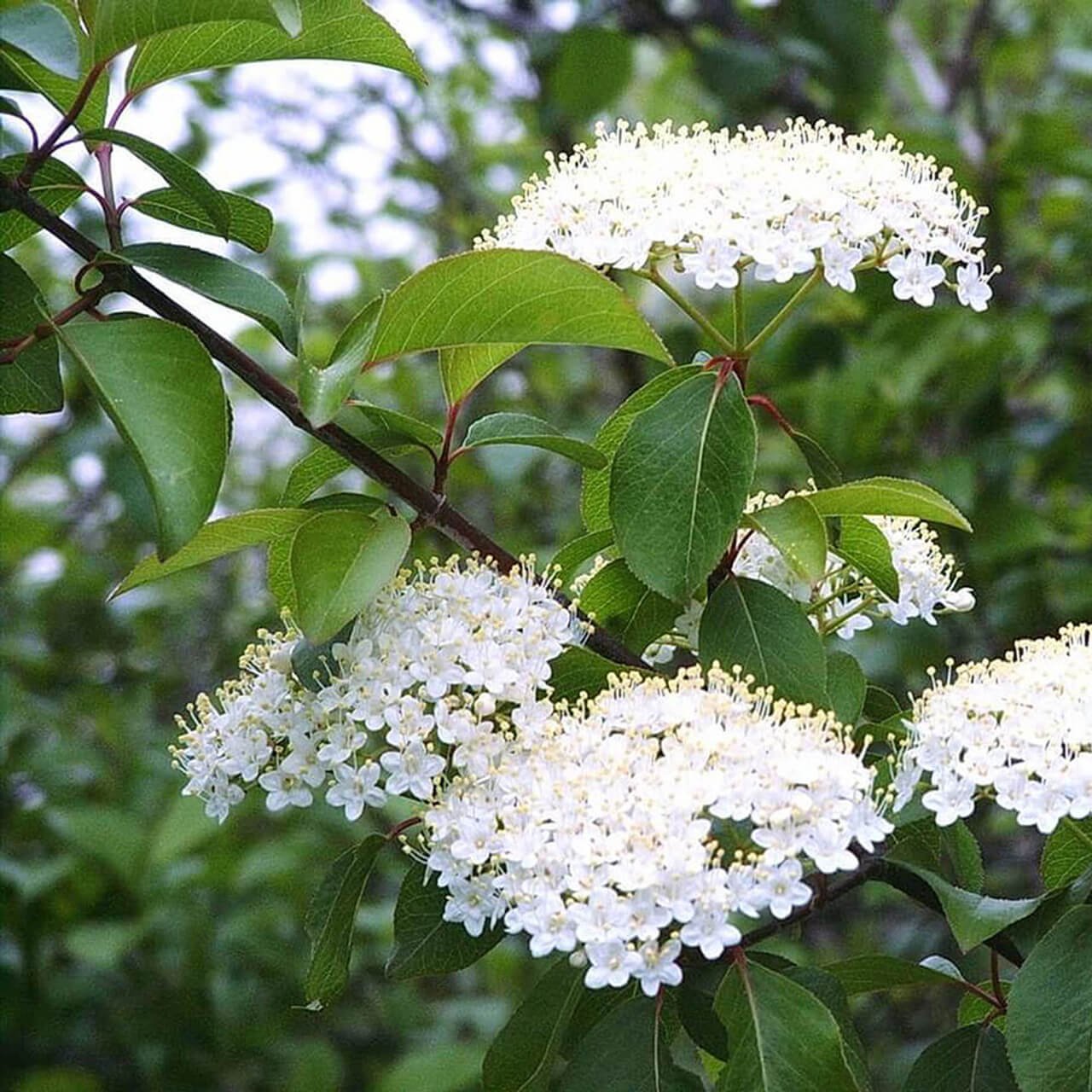
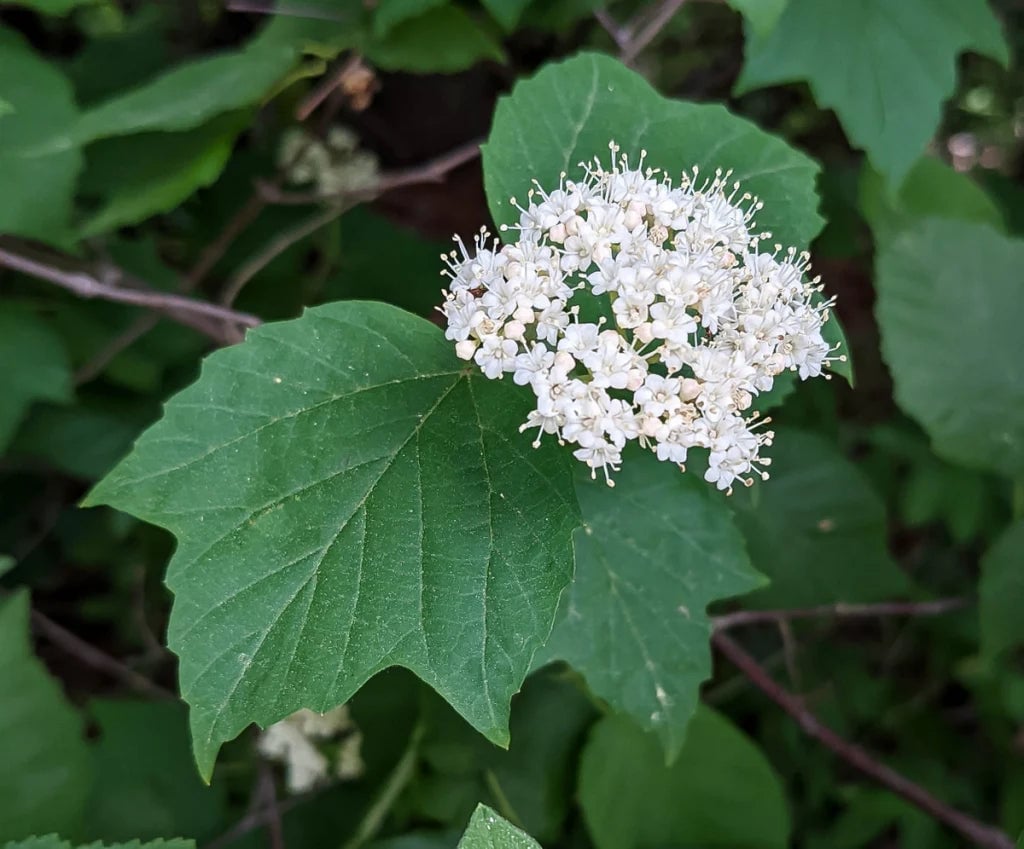
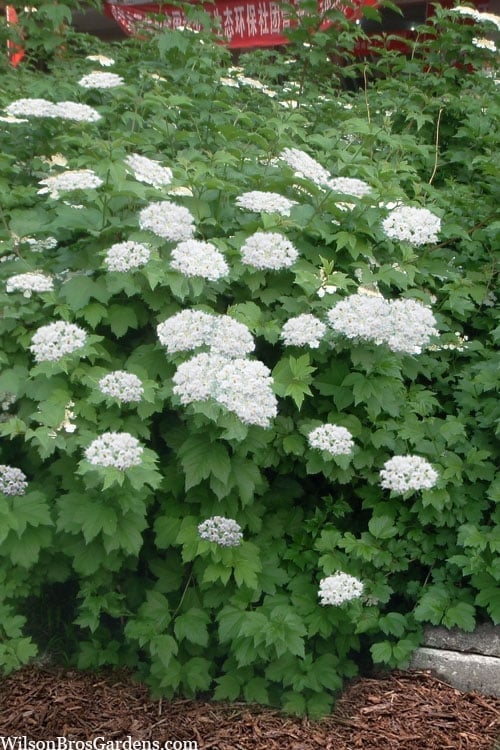
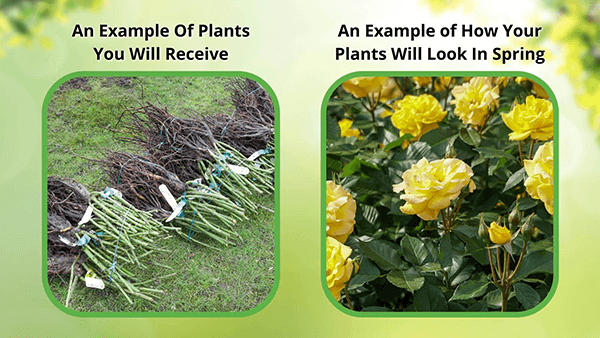

Mapleleaf Viburnum
Attractive spring blooms
Easy to maintain
Adaptable to various soils
Thrives in
ZONE 3ZONE 4ZONE 5ZONE 6ZONE 7ZONE 8ZONE 9This plant ships:
November 20251 Year Guarantee on all plants
Mapleleaf Viburnum - Viburnum acerifolium
The Mapleleaf Viburnum (Viburnum acerifolium) is native to Eastern North America. It is a deciduous shrub and more shade tolerate than other viburnums. It is naturally found thriving in woodland understories.
The leaves of this charming shrub are the shape of maple leaves which is where the plant gets its common name. They are bright green in color with prominent veins. In the fall, the leaves turn a beautiful pinky-red. The areas surrounding the leaf veins tend to color change more slowly than the rest of the leaf, which creates an intense and beautiful contrast of green and pink - a unique color combination to add to the gardenscape.
Plant Details - Mapleleaf Viburnum
Family: Adoxaceae
Hardiness Zones: 3–9
Light Requirement: Partial shade to full shade
Water Needs: Medium
Height: 3 - 6 ft
Spread: 2 - 4 ft
Growth Rate: Moderate
Bloom Time: Late spring to early summer
Flower Color: White
Wildlife Value: Attracts butterflies and bees; fruits are consumed by birds and small mammals
Flowering in late spring, these buds emerge well after the plant has developed its leaves, creating a beautiful contrast of white and green in the garden. The flowers of this endearing shrub are clustered in flat-topped corymb and are bright white in color. Each flower has five petals that are gently rounded with slender stamens reaching elegantly high above the flower’s center.
Once pollinated, the flowers develop drupes of a dark bluish-purple. The berries develop in the late summer and early autumn and persist through part of the winter, which provides important fodder for birds. The Mapleleaf Viburnum, with its showy foliage and flowers, is a great selection for a mixed shrub border or hedge, or as a foundation plant.
Landscape Uses and Maintenance - Mapleleaf Viburnum
It is low maintenance and easy to grow when planted in the appropriate location. It grows great in moist, well-drained soils and is particularly tolerant of acidic conditions.
growing in understories, this species prefers part shade environments. It is a suckering shrub as it grows from a rhizome. When left to expand, this shrub can create dense thickets of stems.
To develop a strong fruit set and food source for native wildlife, this plant needs to be cross pollinated. So, plant a few individuals of this species in your garden and enjoy the aesthetic of the berries and the wildlife that comes to indulge upon them.
Noteworthy Characteristics
Showy autumn colors, easy to grow, berries are fodder for wildlife
The colorful majesty of this charming shrub will bring vibrancy to your autumn garden. Shop for Mapleleaf Viburnum shrubs online at TN Nursery. For 68 years, we have served the landscaping industry and homeowners with specimen plants.
This Is How Your Plants Will Look upon Delivery
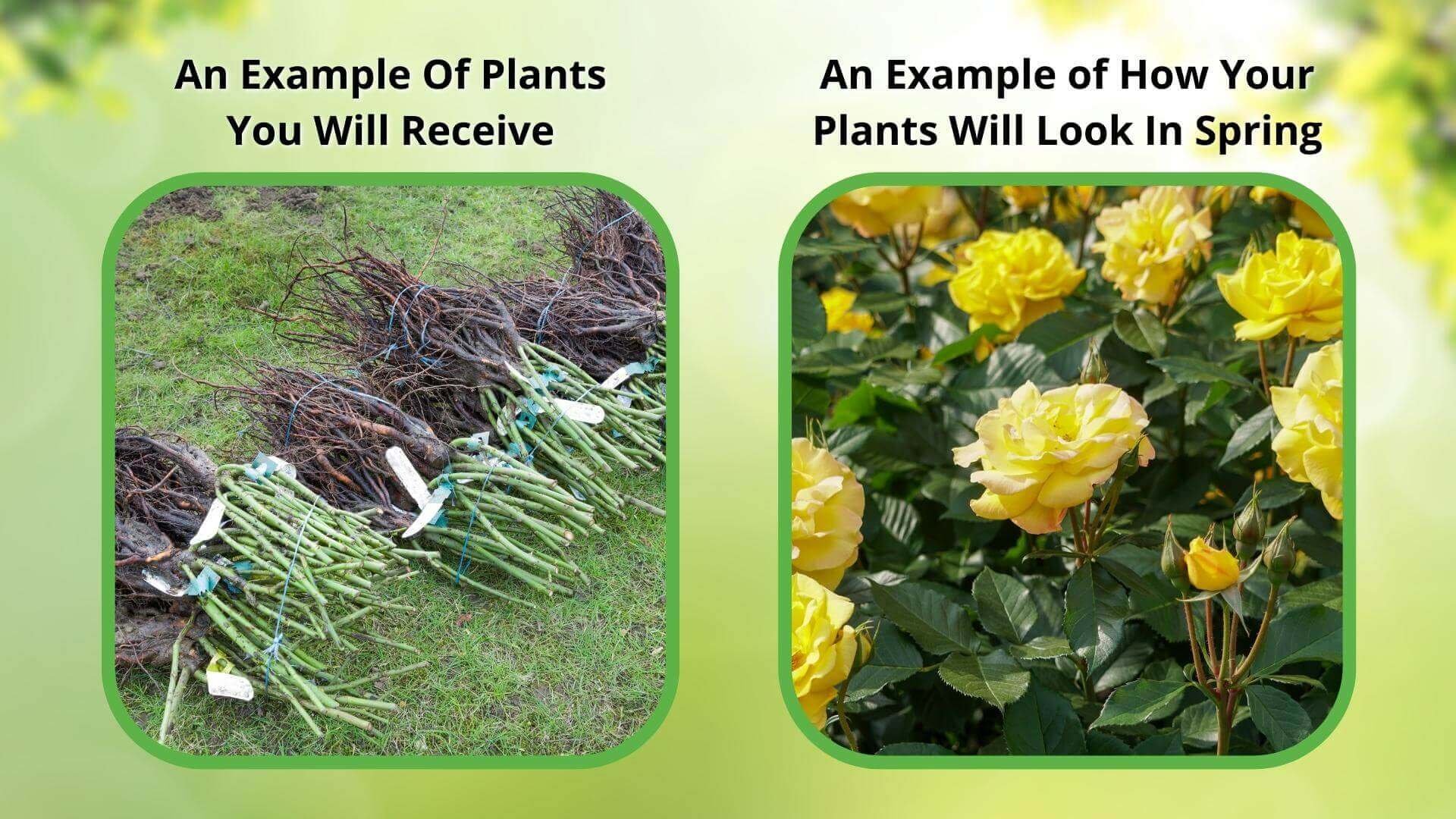
Bloom Season
Spring
Bloom/Foliage Color
White
Height at Maturity
Over 10 Feet
Care
Mapleleaf Viburnum thrives in well-drained soil with regular moisture. Trim after blooming to maintain form and remove any dead or damaged branches. Apply mulch around the base to conserve moisture and suppress weeds. It is generally low-maintenance but benefits from occasional feeding.
Plant Reproduction
Mapleleaf Viburnum spreads via root suckers and seeds.
Plant bare-root shrubs during the more excellent spring or fall months, from November through April. Dig a hole twice as wide as the root system and slightly more profound than its height. Position the shrub so that the top of the roots is level with the ground, and put back the soil dug over the roots. Apply a 2-3 inch layer of mulch around the base to retain moisture and suppress weeds, ensuring the mulch does not touch the shrub's stem. Water regularly, especially during the first year, to establish strong roots. Prune shrubs as needed to promote healthy growth. In the spring, fertilize with a balanced, slow-release fertilizer suited to the specific needs of the shrub.
Shipping date depends on the date displayed and chosen when you order from the product's page.
We only accept returns on plants verified dead. If you think your plants have died, we offer a 1 year warranty, please use this File a Claim Link to verify dead plants and start with return warranty process.






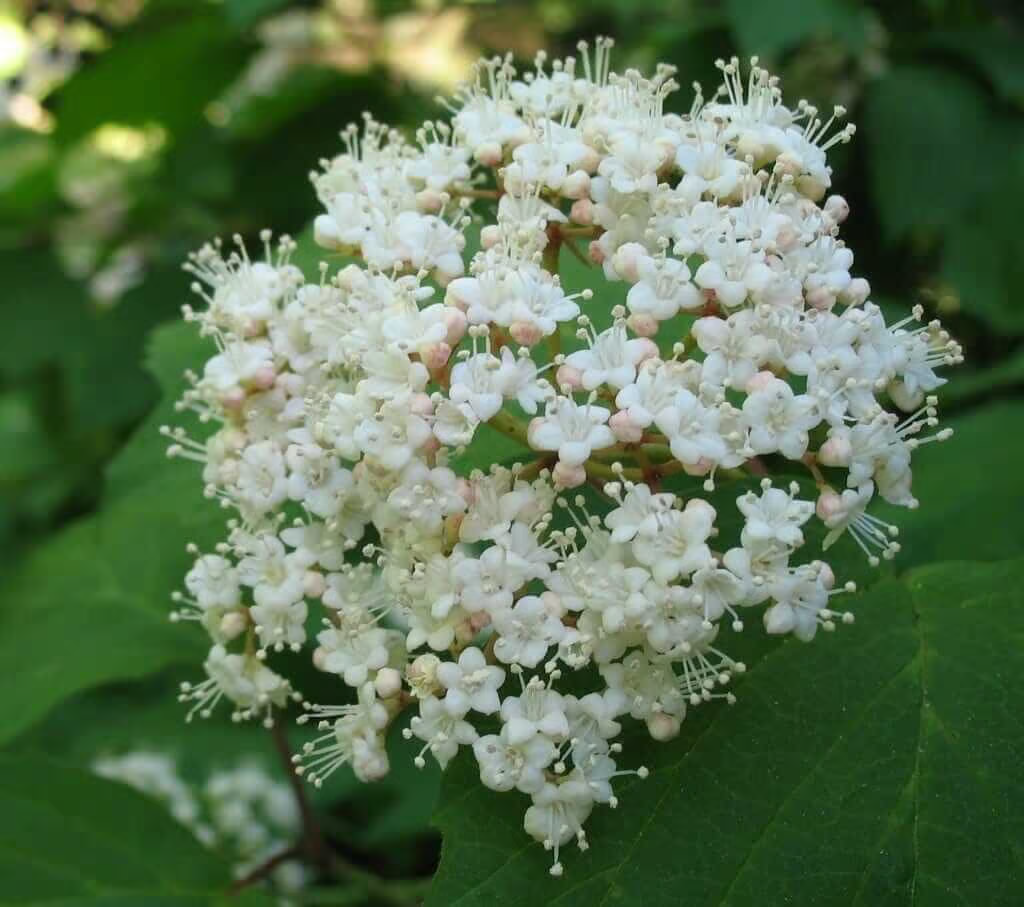
Beautiful Blooms:
Produces clusters of white flowers that bring a charming touch of color and attract pollinators.
Unique Foliage:
Features distinctive, maple-like leaves that add an intriguing texture to any garden.
Seasonal Appeal:
Offers year-round interest with its vibrant leaves in spring and summer, followed by attractive red berries in the fall.
Wildlife Friendly:
The flowers attract pollinators, and the berries provide food for birds, enhancing garden biodiversity.
Caring Tips
How do I care for my Mapleleaf Viburnum?
Each box contains detailed care instructions and information about your product. But here's the basics.
Care Tips
Mapleleaf Viburnum thrives in well-drained soil with regular moisture. Trim after blooming to maintain form and remove any dead or damaged branches. Apply mulch around the base to conserve moisture and suppress weeds. It is generally low-maintenance but benefits from occasional feeding.
Light Requirements
Mapleleaf Viburnum thrives in partial to full shade. It favors a place with morning sun and afternoon shade, which helps maintain its vibrant foliage and overall plant health by ensuring adequate moisture and well-drained soil.
Hardy Planting Zones
3 • 4 • 5 • 6 • 7 • 8 • 9
Header
Use this content to share information about your store and products.
Frequently Asked Questions
How often should I water my plants?
How do I know if my plant is getting too much or too little sunlight?
What should I do to prepare my plants for winter?
What are the signs that my plant needs fertilizing?
How can I prevent pests from damaging my plants?
How do I choose the right plant for my climate zone?






